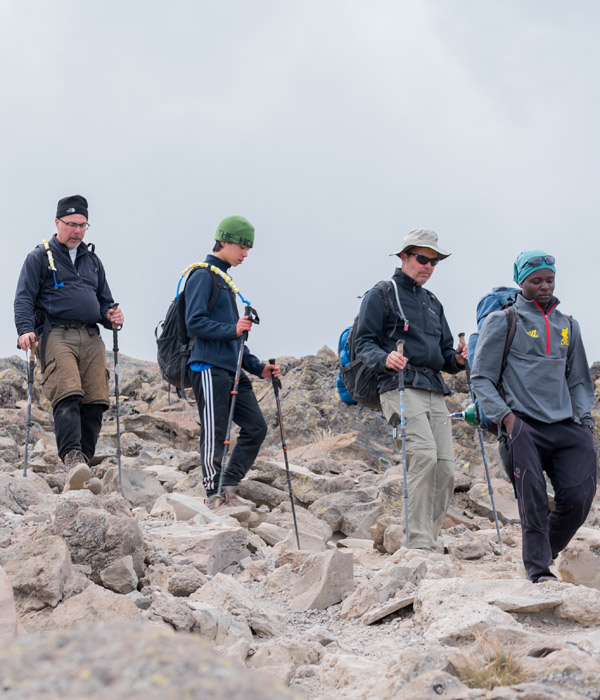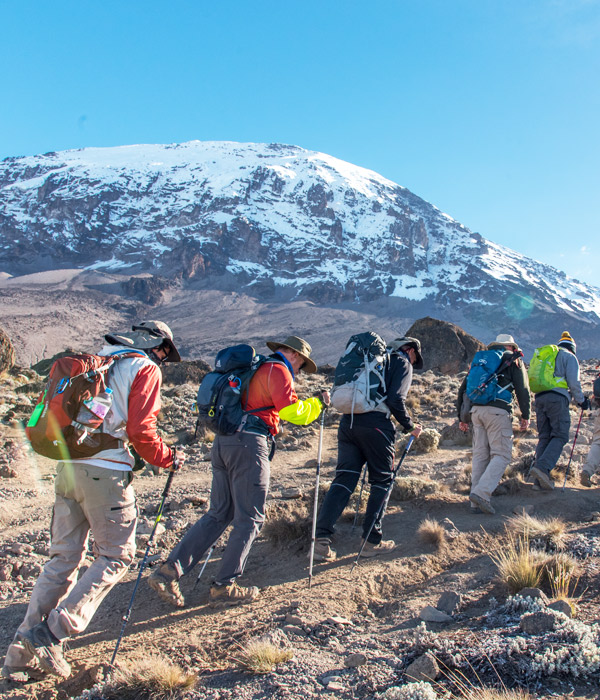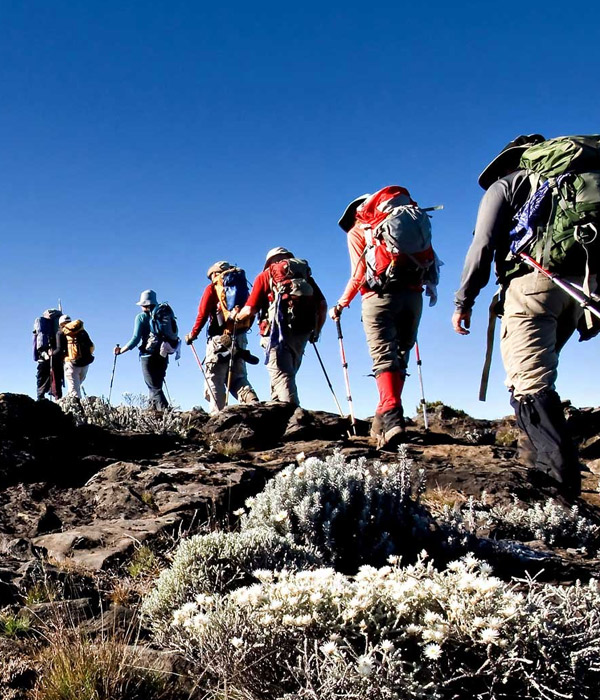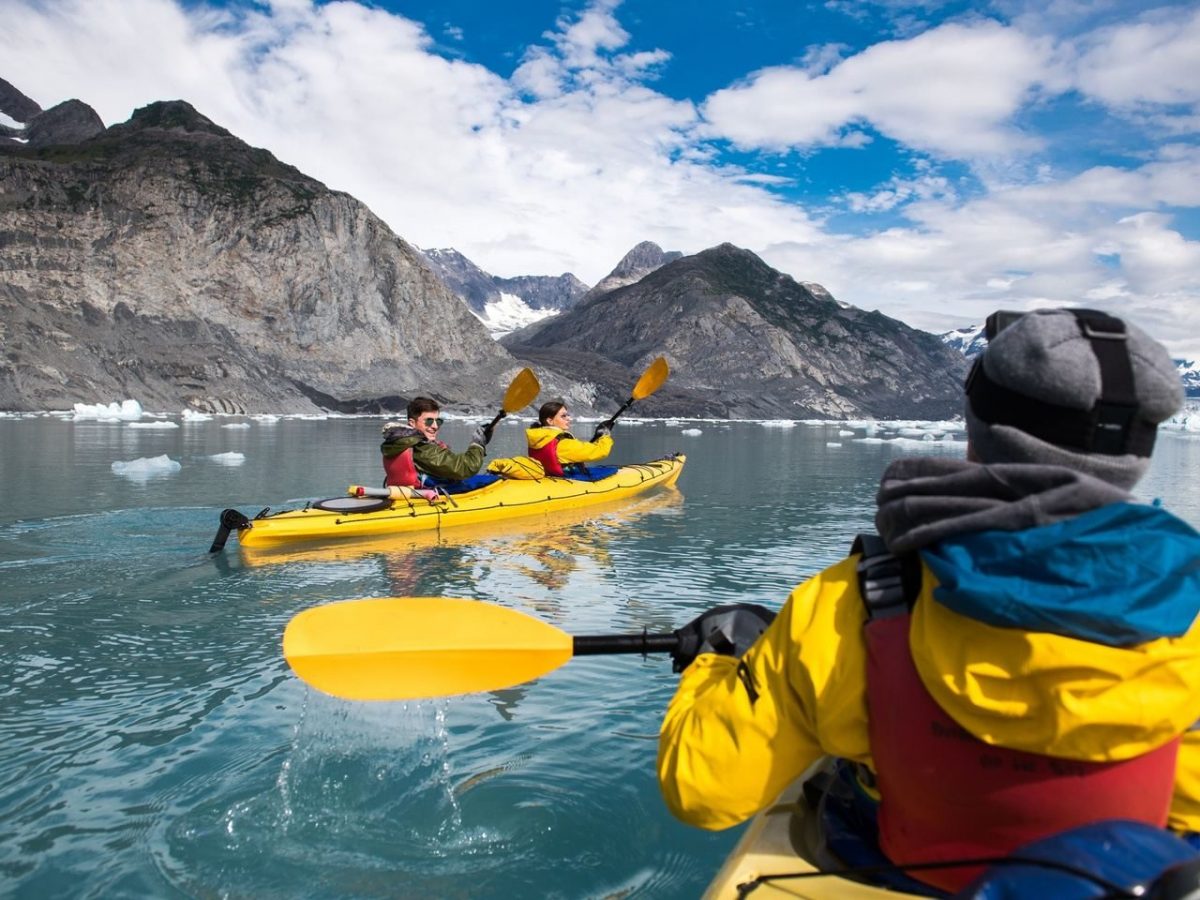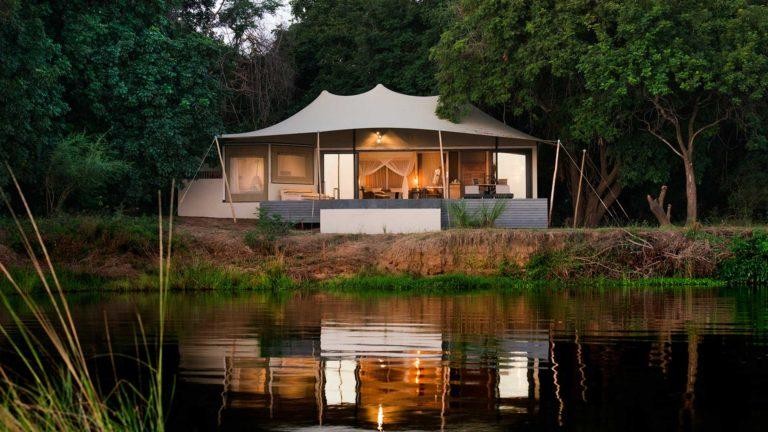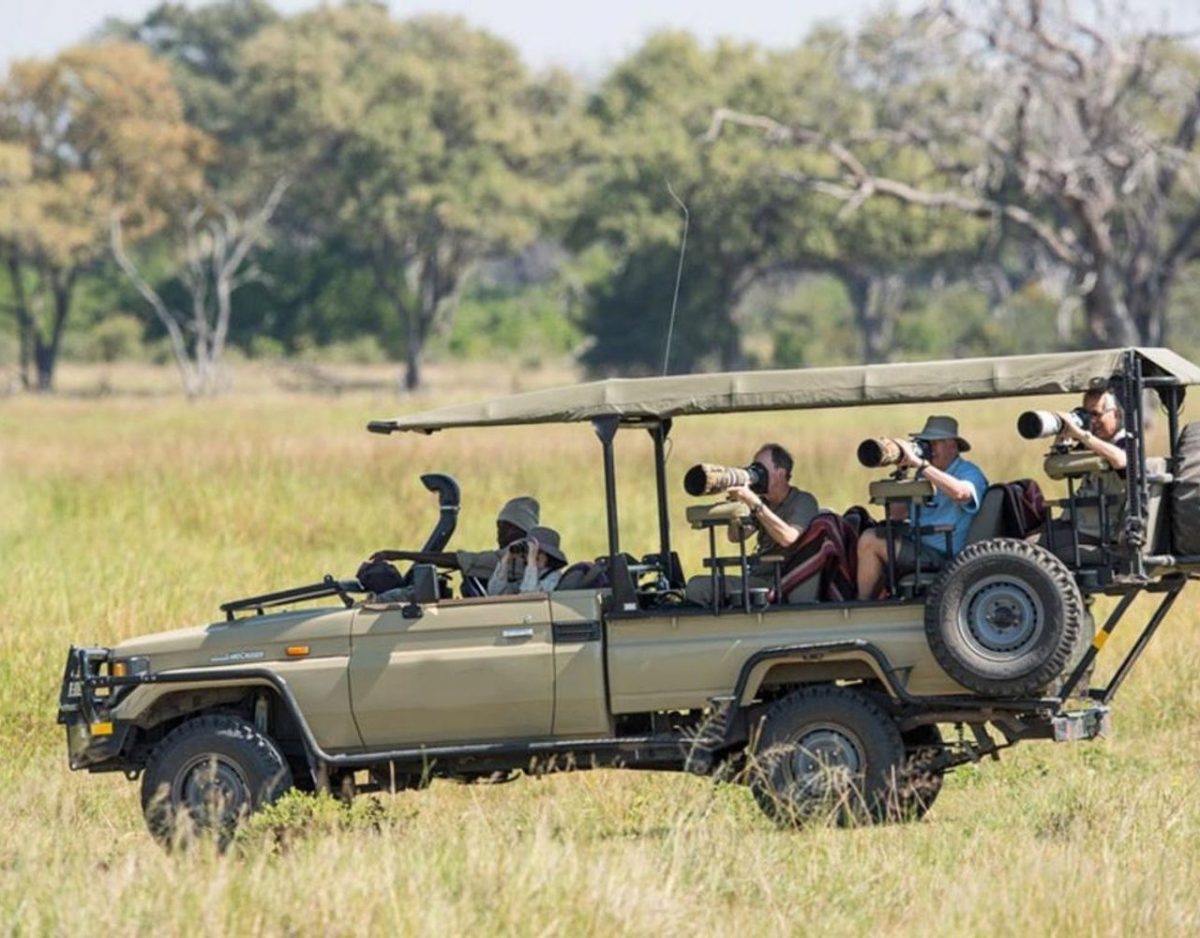Kilimanjaro Summit Preparing
Make sure you get enough sleep and rest as possible when arriving at Barafu Camp. So, you must prepare your daypack as soon as you arrive. You must wake up around 11 pm to start your summit hike. After having dinner, we will go to our tents to sleep. But sleep can be challenging due to altitude and the excitement of what’s ahead.
At 11 pm, before we start our climb at around midnight, we will provide your team with hot tea and some snacks. The essential things you will require in your daypack are a head torch, snacks, water, etc.
You can do several things to prepare yourself for your summit ascent.
Get the Right Temperature
Conserving energy by ensuring that you always have the right body temperature will mean that your body is working on time to cool down or heat up.
When you start walking, you need to be slightly cool, so just before you start, remove your down jacket or over the coat. When you stop moving for your “maintenance stop,” you immediately need to wear your jacket or coat to keep warm. This will help you conserve energy.
Eat and Drink Plenty
You must properly care for your eating and drinking to ensure enough energy to reach the summit and descend. On the summit day, you have to trek for 13-15 hours, which could easily consume approximately 4000 calories.
It would be best to carry candy bars, crisps, cookies, trail mix, fruits, nuts, energy bars, hard sweets, etc., for your summit day.
Utilize Stops Effectively
During your summit ascent, you must use to make stops effectively because there will be only “maintenance stops” and no rest stops. You must utilize this time effectively to ensure you are ready for the next stage. You must plan what you need:
- You must adjust your clothing
- You must have a loo visit.
- You must eat and drink plenty before you stop.
- You must put something warm to prevent heat loss.
Go Slowly but Not Too Slow
You must maintain your walk slowly but not too slowly; try to keep a pace set by the guide which is best for you. If you try to go fast, that will put you at risk of altitude sickness, and moving too slowly will make your walk impossible to complete that day. So you must keep plodding, and you will surely reach there.
We will reach the crater rim by daybreak with one foot in the facade of the other. You can see the sun rising over Mawenzi and spectacular 360- degree views. While looking down into the crater, you will also enjoy seeing the glacial ice fields and the famous “snows of Kilimanjaro.”
It’s another 1-2 hour walk to Uhuru peak from the crater rim, the highest free-standing mountain in the world, the roof of Africa, – 19,341ft above sea level.
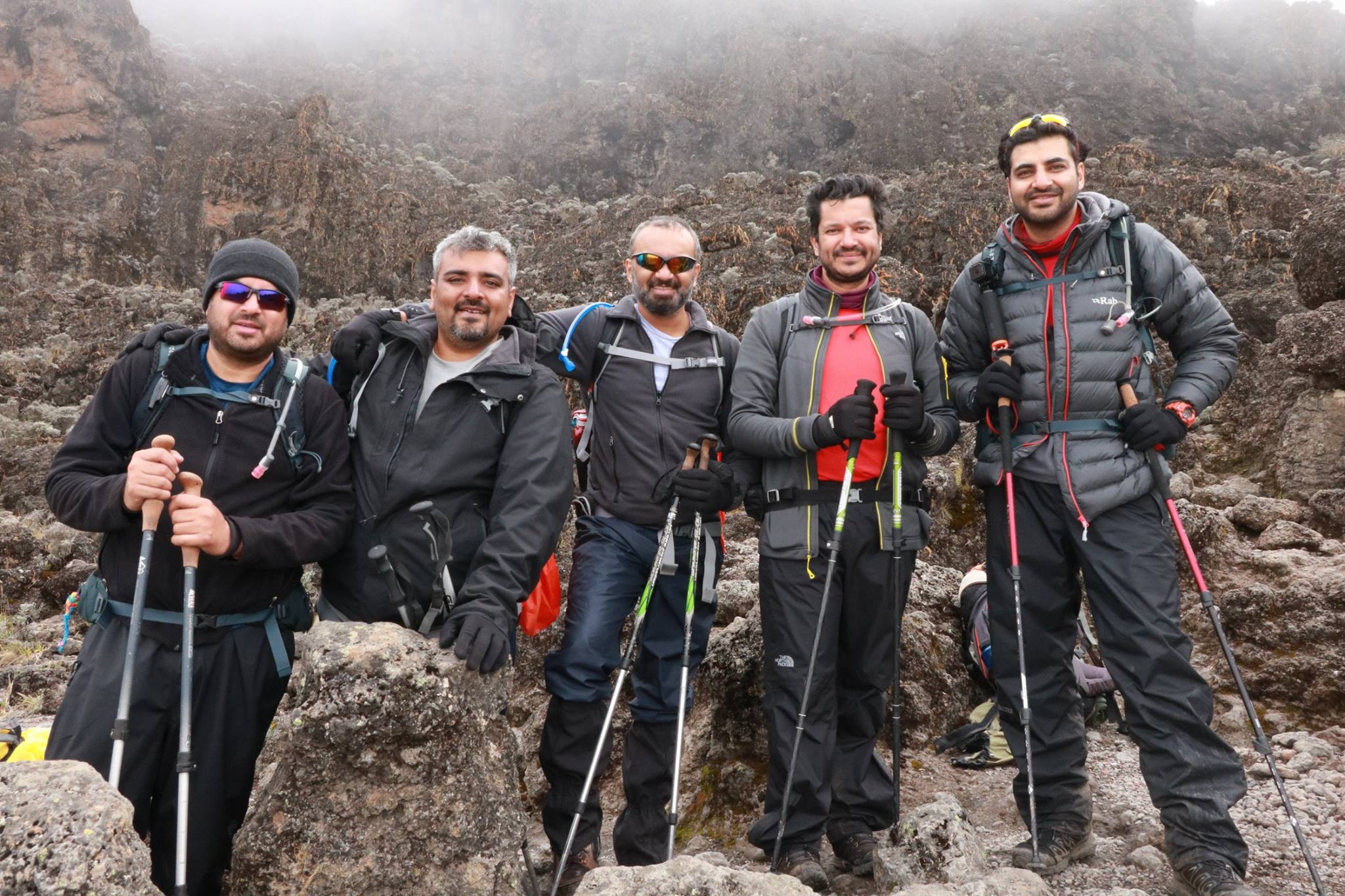
The Coldness at the Summit of Kilimanjaro Uhuru Peak
The temperature will decrease as you move toward Mount Kilimanjaro’s ecological zones. The temperature at nighttime ranges between 20 and -20 degrees Fahrenheit at Uhuru peak. This mountain creates its weather patterns due to its great height.
It’s Not Over Yet: The Descent from the Summit Uhuru Peak
It’s time to head back to Barafu Camp after we have taken photos and congratulated each other for this outstanding achievement. Wear a knee brace if you have knee problems, as descending can be challenging. You have to walk slowly by using poles to maintain a balance. The oxygen in the atmosphere will be a welcome relief from thin air at the summit as you get to lower elevations.
Before descending to our final camp on the mountain, we will have lunch at Barafu Camp. As you will be tired and exhilarated, you will get a good night’s sleep.
The following day you will have to trek 3-4, mostly downhill through the forest and back to the trailhead. Then you will be transported to your post-climb hotel accommodation.
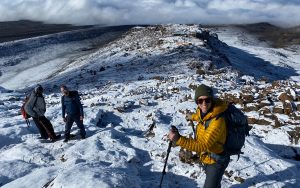
Best Route To Climb Kilimanjaro
Kilimanjaro is a challenging mountain with many different routes to choose from. But, with Good Earth
Expedition, your difficult route can be easy and enjoyable!
Best Place Destinations
We provide some very affordable prices compared to others.


